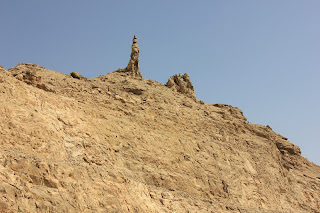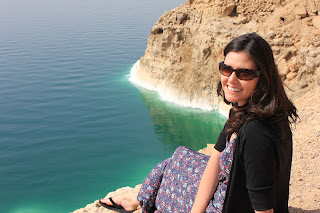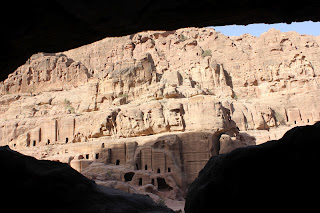This weekend, my dad and Uncle Paul came to London on the first leg of their European WWII tour. They’ve wanted to take this trip together forever, so it worked out that it was booked while David and I are living in London so we could host them for a couple of days.
My dad and his brother are very close in age and grew up always pranking each other and getting into trouble like typical rowdy boys. We love hearing crazy stories like their BB gun shooting spree, where they tried to hide their wounds from Grandma by claiming “the mosquitos were really biting out there today!” or how they would scare everyone by diving off the lake dock into about 2 feet of water and then swimming 50 metres underwater to the neighbor’s dock to hide. The silliness is still there and all the kids love acting goofy when we’re together with them!
Dad and Uncle Paul showed up on Saturday afternoon with just the packs on their backs and their energy! Like a couple of carefree teenagers, they are literally backpacking through Europe. No suitcases, no hotel reservations. They’ll stay wherever the wind takes them! But, since they were touring with me through England, we had to plan ahead! So I booked museum tickets in advance, rented a car for Sunday (which David kindly drove us around in), and booked their ferry tickets to Caen for Monday.
First on the agenda in London was the Cabinet War Rooms in Whitehall. The CWR is the secret underground complex where Winston Churchill conducted the Second World War. Housed in the basement of the current Treasury building, it contains old map and conference rooms, and private quarters for staff. During the war, everyone worked long, hard hours so many people would just spend the night instead of commuting home and back. Or if there were bombing raids, the staff would bunker down even further underground. It was really interesting to hear stories of former employees. Many of them developed Vitamin D deficiencies from spending so much time underground so sun lamps were brought in, but then people got “sunburned.” Others complained about the quality of air and the sewage systems. And then there was the actual work – and Churchill. The CWR also contains the Churchill Museum, where we learned all about the man’s life; from a lonely child shipped off to boarding school by his aristocratic parents, to the young reporter who made a daring escape after being kidnapped in South Africa, to becoming Prime Minister.
We weren’t expecting to have that much time after the CWR, but we got out a bit early and decided to book it to the Imperial War Museum, over a mile away across the Thames. We made it just in time before the doors closed, and were able to spend an additional hour inside.
After walking through a WWI trench, taking shelter with our neighbors during the blitz, and reading spy stories about MI6, we were hungry! It was closing time, so we walked back across the river to take some photos and then find a pub for dinner.
We chose the Salisbury Pub in Covent Garden, an 1890’s restaurant still serving “great British pub food.”
Sunday was my dad’s birthday! To celebrate, we went to the Duxford Imperial War Museum in Cambridgeshire. This is a huge airfield containing over 200 aircraft and different war exhibits in each hangar.
In Hangar 1, we learned a little more about the history of flight, saw some of the fabric the Wright brothers used in their first airplane, and even boarded a Concorde! There was a group of paratroopers there that day, so we went through the Para center to learn more about this elite special forces unit. We even saw a model of Bing, the para-dog! His owner lent him to the British Army during WWII, and he parachuted into France during the Normandy campaign. He was even awarded a medal! But the question remains… who pulled his parachute cord?
In the Battle of Britain hangar, we learned more about the fight to save Britain from Hitler’s invasion. Living in England during that era must have been terrifying. Fathers were drafted, mothers had to evacuate their children out of the city for safety, and everything was rationed. 60,000 people were killed in air raids. I knew it was in the thousands, but I didn’t know it was that many people. There were handbooks on display giving instructions on how to ration your meals, including creative uses for leftovers.
The final hangar was the American Air Museum. The highlights here were the SR-71 blackbird, the fastest air-breathing manned aircraft. It can get from London to Edinburgh in just 10 minutes! Average flying time on a commercial jet is 70 minutes. One of the most interesting things I read was the “Welcome to Britain” guide for American soldiers stationed in the UK. They were repeatedly reminded not to talk about their pay, as even British soldier’s salaries were rationed. And Americans were never supposed to talk about how we “saved” England and France during WWI, as most housewives saw more action than the average American soldier during the Great War. There were also a lot of touching letters from fallen soldiers to their families back home.
The American Air Museum is a tribute to the 30,000 American airmen who died during WWII flying out of UK bases. Nearby in Cambridge, there is an American Military Cemetery. So after we left Duxford, we visited the cemetery. Unfortunately it was closed, but we were able to see some of the white crosses from the street. It is a beautiful location as a final resting place, but it is still sad to think that back then, families couldn’t come and visit their loved ones’ gravesites.
For Dad’s birthday dinner, he found a great country pub using his wonderful GPS! We felt like we were in the shire, since we were in Cambridgeshire with rolling green hills, thatched roof houses, and bunnies everywhere!
After dinner, we drove to Cambridge to walk through the town center. We’ve never been there before, so we were glad we went. It’s a picturesque university town complete with cobblestone streets, 600-year old churches, and a babbling brook running through the college grounds.
My dad and his brother are very close in age and grew up always pranking each other and getting into trouble like typical rowdy boys. We love hearing crazy stories like their BB gun shooting spree, where they tried to hide their wounds from Grandma by claiming “the mosquitos were really biting out there today!” or how they would scare everyone by diving off the lake dock into about 2 feet of water and then swimming 50 metres underwater to the neighbor’s dock to hide. The silliness is still there and all the kids love acting goofy when we’re together with them!
This is what I'm talking about - posing in front of some random person's house, waving crazily at tour buses passing by. :)
Dad and Uncle Paul showed up on Saturday afternoon with just the packs on their backs and their energy! Like a couple of carefree teenagers, they are literally backpacking through Europe. No suitcases, no hotel reservations. They’ll stay wherever the wind takes them! But, since they were touring with me through England, we had to plan ahead! So I booked museum tickets in advance, rented a car for Sunday (which David kindly drove us around in), and booked their ferry tickets to Caen for Monday.
First on the agenda in London was the Cabinet War Rooms in Whitehall. The CWR is the secret underground complex where Winston Churchill conducted the Second World War. Housed in the basement of the current Treasury building, it contains old map and conference rooms, and private quarters for staff. During the war, everyone worked long, hard hours so many people would just spend the night instead of commuting home and back. Or if there were bombing raids, the staff would bunker down even further underground. It was really interesting to hear stories of former employees. Many of them developed Vitamin D deficiencies from spending so much time underground so sun lamps were brought in, but then people got “sunburned.” Others complained about the quality of air and the sewage systems. And then there was the actual work – and Churchill. The CWR also contains the Churchill Museum, where we learned all about the man’s life; from a lonely child shipped off to boarding school by his aristocratic parents, to the young reporter who made a daring escape after being kidnapped in South Africa, to becoming Prime Minister.
We weren’t expecting to have that much time after the CWR, but we got out a bit early and decided to book it to the Imperial War Museum, over a mile away across the Thames. We made it just in time before the doors closed, and were able to spend an additional hour inside.
After walking through a WWI trench, taking shelter with our neighbors during the blitz, and reading spy stories about MI6, we were hungry! It was closing time, so we walked back across the river to take some photos and then find a pub for dinner.
We chose the Salisbury Pub in Covent Garden, an 1890’s restaurant still serving “great British pub food.”
Sunday was my dad’s birthday! To celebrate, we went to the Duxford Imperial War Museum in Cambridgeshire. This is a huge airfield containing over 200 aircraft and different war exhibits in each hangar.
In Hangar 1, we learned a little more about the history of flight, saw some of the fabric the Wright brothers used in their first airplane, and even boarded a Concorde! There was a group of paratroopers there that day, so we went through the Para center to learn more about this elite special forces unit. We even saw a model of Bing, the para-dog! His owner lent him to the British Army during WWII, and he parachuted into France during the Normandy campaign. He was even awarded a medal! But the question remains… who pulled his parachute cord?
Bing!
In the Battle of Britain hangar, we learned more about the fight to save Britain from Hitler’s invasion. Living in England during that era must have been terrifying. Fathers were drafted, mothers had to evacuate their children out of the city for safety, and everything was rationed. 60,000 people were killed in air raids. I knew it was in the thousands, but I didn’t know it was that many people. There were handbooks on display giving instructions on how to ration your meals, including creative uses for leftovers.
The final hangar was the American Air Museum. The highlights here were the SR-71 blackbird, the fastest air-breathing manned aircraft. It can get from London to Edinburgh in just 10 minutes! Average flying time on a commercial jet is 70 minutes. One of the most interesting things I read was the “Welcome to Britain” guide for American soldiers stationed in the UK. They were repeatedly reminded not to talk about their pay, as even British soldier’s salaries were rationed. And Americans were never supposed to talk about how we “saved” England and France during WWI, as most housewives saw more action than the average American soldier during the Great War. There were also a lot of touching letters from fallen soldiers to their families back home.
Lockheed Blackbird
The American Air Museum is a tribute to the 30,000 American airmen who died during WWII flying out of UK bases. Nearby in Cambridge, there is an American Military Cemetery. So after we left Duxford, we visited the cemetery. Unfortunately it was closed, but we were able to see some of the white crosses from the street. It is a beautiful location as a final resting place, but it is still sad to think that back then, families couldn’t come and visit their loved ones’ gravesites.
For Dad’s birthday dinner, he found a great country pub using his wonderful GPS! We felt like we were in the shire, since we were in Cambridgeshire with rolling green hills, thatched roof houses, and bunnies everywhere!
The Three Horsehoes Pub
After dinner, we drove to Cambridge to walk through the town center. We’ve never been there before, so we were glad we went. It’s a picturesque university town complete with cobblestone streets, 600-year old churches, and a babbling brook running through the college grounds.
12th century Round Church designed after the Holy Sepulchre in Jerasulem
The "backs" behind the large colleges along the river Cam
Punting boats on the Cam
David and I are very blessed to have such a wonderful father/father-in-law and uncle. Uncle Paul served in the Army for years and recently completed a 2-year tour in Iraq, so this trip was really special to him and my dad, and we were honored to be a small part of it. After learning more this weekend about the hard work put in and sacrifices made by those in the military, we just really want to thank you again for your service, Uncle Paul!
















































